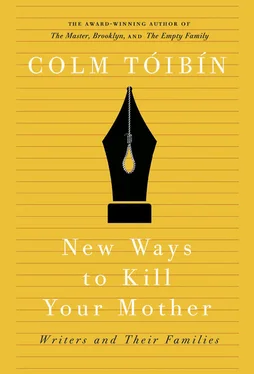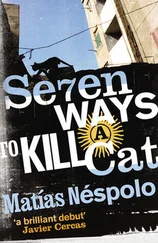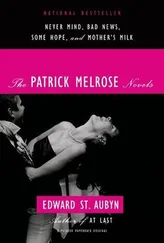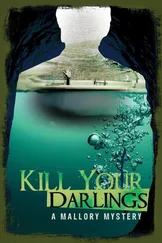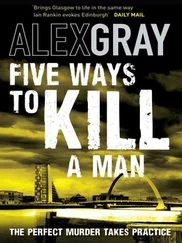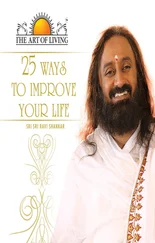By the end of 1923, with the Civil War over, her husband having won the Nobel Prize and now a senator in the Irish Free State, with a house in Merrion Square (the equivalent of Berkeley Square in London, Yeats wrote to a friend), with the tower coming into shape, and two engaging children, and the Irish Sea between herself and her mother, who could irritate her, George Yeats had added to her happiness by having a number of Irish friends of her own. Like many women of her class, she was in need of a pair of homosexual men to confide in and gossip with, and these came in the guise of the playwright Lennox Robinson and the poet Thomas MacGreevy. Since most of Dublin suspected their homosexuality, ‘neither was a threat to the good name of Mrs W. B. Yeats’, Saddlemyer writes. She worked with both on the Dublin Drama League, which sought to produce more cosmopolitan work than was being put on at the Abbey. When MacGreevy moved to London in 1925, she wrote: ‘I wish you were back here. Willy said last night very solemnly: “Now MacGreevy’s not here we have to do our own gossiping.”’ In August of that year, the Yeatses spent time in Milan with Robinson and MacGreevy. Yeats, it seemed, did not enjoy the trip as much as George and her two new friends. He stayed in the hotel when the others went out sightseeing.
‘Only six years older than she,’ Saddlemyer writes, ‘Lennox quickly became George’s devoted pal. Together they gambled on the sweeps, went to the races (both horse and dog), the opera, the cinema and the theatre; they shared their experiences in gardening and breeding canaries.’ And they both drank a good deal, Robinson slowly becoming hopelessly alcoholic.
In London, MacGreevy, much to George’s consternation, also befriended her mother, who immediately began to flirt with him. ‘You make me wish I were your own age,’ her mother wrote to him, ‘we could play a good game.’ By encouraging him to become an artist she seemed to feel that she had become one, too: ‘Love must be kept firmly in the present, it is a thing without past or future… The fact remains that, fundamentally and however painfully, we are artists and artists we shall remain, and we both know that art is the only thing that matters and the one thing that makes the world tolerable.’
Soon George’s mother and the young Irish poet were discussing George, much to George’s annoyance:
Please please please, don’t mention my name to my mother when you are writing to her more than is consistent with the usual necessities… My mother loves to make a whirlpool and especially if she can suck me in to it, and she has probably worked herself up into an annoyance with me in order to amuse herself over the Xmas holidays. That was why I said gaily to you in London: ‘you are not to discuss me with my mother.’
Robinson and MacGreevy, in the early years of their acquaintance with George, thickened the plot by indulging in unrequited love. In 1919, Robinson, whose idol was Yeats, fell for Iseult Gonne, who rejected him despite Yeats’s suggestion that they should marry. Yeats’s sisters invited the unhappy couple to supper, but Lily remained doubtful that Iseult would change her mind. The following year Iseult married the eighteen-year-old Francis Stuart. George, Saddlemyer writes, sympathized with Robinson’s ‘lingering affection for Iseult’.
Both gentlemen then directed their attention towards the artist Dolly Travers Smith, with whose mother, Hester, a well-known medium, they were also friends, both having boarded with her at different times. (Hester’s books included Oscar Wilde from Purgatory: Psychic Messages .) Hester and Dolly were to become the third mother and daughter in Yeats’s circle who provoked interest in the same men. George thought Hester ‘the unbending hard essence of everything I loathe mentally, emotionally and temperamentally. She makes me think of lumpy beds, Russian fleas and ipecacuanha wine.’
In the same years that she was getting to know Robinson and MacGreevy, George was also spending time at Thoor Ballylee. In March 1926, she wrote to MacGreevy: ‘I go to Ballylee Thursday morning for three glorious days of solitude & cabbage planting & on my return will write you a sober & sane & reasonable letter.’ But there are also letters of complaint about conditions there, and the amount of hard work required to keep the place going. Yeats, in the meantime, was writing poems that used the tower at Ballylee as symbol and icon. In February 1928 The Tower was published. For the cover of the book Thomas Sturge Moore had made an etching of Thoor Ballylee. ‘Now,’ Saddlemyer writes,
with that magnificent volume and A Vision both published, from now on, while still ‘this blessed place’, the tower had become emblazoned on his heraldic shield for all to recognize, assess and debate. Proud as she might be of the poetry she had done so much to make possible, the penalty was an inevitable dissipation of the original magic; by remaking the imagery, Yeats had once again taken possession of the tower itself.
The tower had served its purpose; like the automatic writing, Thoor Ballylee had delivered him metaphors for his poetry; it had also allowed George to function in the domestic sphere while at the same time empowering Yeats, offering him both comfort and a charged environment. Once the book was published, neither she nor Yeats had any desire to go back there. Despite all the specially commissioned furniture, the letters to the builder, the planning and dreaming, after 1928 the tower remained closed, a symbol of the way writers use houses for their magic properties rather than their domestic space. Over the next few years, as Lady Gregory’s health was declining, Yeats spent a good deal of time at Coole and ‘dutifully reported on regular inspections of the rapidly deteriorating cottage and castle’. When she grew older his daughter Anne ‘tentatively asked whether she might go there to paint, but George’s monosyllabic refusal was so abrupt that she gave up the idea of ever returning’.
The abandonment of the tower may also be bound up with an essential change in the relationship between George and Yeats.
Around 1928 and 1929 she ceased to have a close sexual relationship with him and became his nurse, the devoted mother of his children and a great worrier on his behalf. Yeats and their children seemed to suffer from great numbers of illnesses. From the time George and Yeats went on holiday to Spain in November 1927 until he died in January 1939, the state of his health and her children’s health became George’s main preoccupation; her tone in letters is often bitter and disappointed. In 1928 she wrote to MacGreevy: ‘had I known that all this might happen I should certainly never have had a family.’ She added ‘burn this when read’ at the top of the letter. When in Spain Yeats’s lung began to bleed, they made their way with difficulty to France and from there to Rapallo. Yeats wrote to Olivia Shakespear that George was ‘all goodness and kindness’. George, as she tried to get the children to Italy, wrote to Robinson: ‘I felt for years that life was quite unnecessary & if only a landslide would remove me they could have jointly a nurse a governess a secretary & a housekeeper & all get on so much better.’
In March 1928, George signed a lease on a large flat close to Ezra and Dorothy Pound overlooking the bay at Rapallo, where they spent two winters. Anne and Michael were sent to school in Switzerland. Yeats was released from being a ‘sixty-year-old smiling public man’ in Ireland. The company in Rapallo included the German poet Gerhart Hauptmann and the American composer George Antheil; others such as Max Beerbohm, Richard Aldington, Siegfried Sassoon and Basil Bunting passed through. In Rapallo Yeats recovered and relapsed and needed constant care. ‘Never was his dependence on George greater, or more pathetic,’ Maddox writes. ‘When told he needed a night nurse so that his wife could get some relief, he wept.’ Mostly in these years she was patient, but his helplessness sometimes exhausted her even temper. When she sent him a lamp to Coole in 1931 and he wrote to ask what oil to put into it, she replied: ‘The lamp of course consumes lamp oil, paraffin. What in Heaven’s name else could it consume?! Its very form shouts paraffin oil; you could surely not have imagined that it demanded Sanctuary oil, or olive oil.’
Читать дальше
